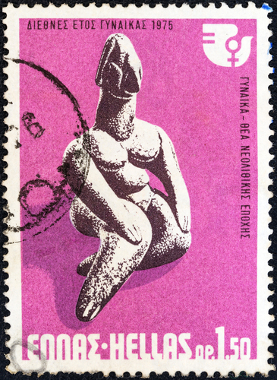O Humanism it was a transitional literary movement between the Middle Ages and the Renaissance. Many scholars do not even consider it a literary movement because it has no characteristics their own, that is, this period and its productions carried traces of the medieval movement in decay (the Troubadourism) and the rising modern movement (the Rebirth). Thus, it is possible to verify, in the literary works of that period, a mixture of the old and the new way of thinking of humanity at the time.
Influences
Humanism had a great influence on social and economic factors.
With the formation of a new social class, the bourgeoisie, merchants began to compete with the nobles and gained importance in society. Furthermore, with the expulsion of peasants by the feudal lords, there was a period of great hunger and disease, such as the Black Plague, which killed a third of Europe's population.
This time was also marked by a political period called Absolutism, when power, previously decentralized in the hands of feudal lords, passed into the hands of kings.
Another important influence was the fall of the Church's hegemony, which came to be criticized even by its followers, a fact that collaborated to an anthropocentric vision in opposition to theocentrism, that is, the religious thought, which until then had a vision theocentric(theos = God – would be at the center of human concerns) gave way to a vision anthropocentric (anthropos = man – would be at the center of the achievements of the human universe).
Do not stop now... There's more after the advertising ;)
→ Movement characteristics
- Theocentrism x Anthropocentrism;
- Separation between music and poetry;
- Scientism;
- Description of the human figure (including the woman), its expressions, details and proportions;
- Discovery of nature, fields, forests, mountains, considered refuges for the sorrows of love;
- Decentralization of knowledge, until then controlled by the Catholic Church;
- Support for Christian and medieval values.
→ Main literary productions
- Humanist Poetry: it had the same characteristics as the troubadour songs, but there was a separation between music and poetry, which came to be recited in palaces and became known as palace poetry.
- Historical Chronicles: aimed to report the lives of kings through historical documents, so there was a search for rigor and objectivity, although the kings were still given all the initiative for the deeds historical records.
- Cavalry novels: they were fictional stories, of adventures, in which the characters showed heroism, loyalty and religiosity.
- Theatrical texts: were divided into records or farces. The autos were short plays that depicted biblical scenes. The farces dealt with the daily life of society at the time and had an exaggerated comic when portraying social types and customs.
→ Main authors
- Francesco Petrarch
- Dante alighieri
- Giovanni Boccaccio
- Erasmus Rotterdam
- Fernão Lopes
- Michel Montaigne
- Gil Vicente
By Mariana Rigonatto
Graduated in Letters
Would you like to reference this text in a school or academic work? Look:
RIGONATTO, Mariana. "What was Humanism?"; Brazil School. Available in: https://brasilescola.uol.com.br/o-que-e/portugues/o-que-foi-humanismo.htm. Accessed on June 27, 2021.


